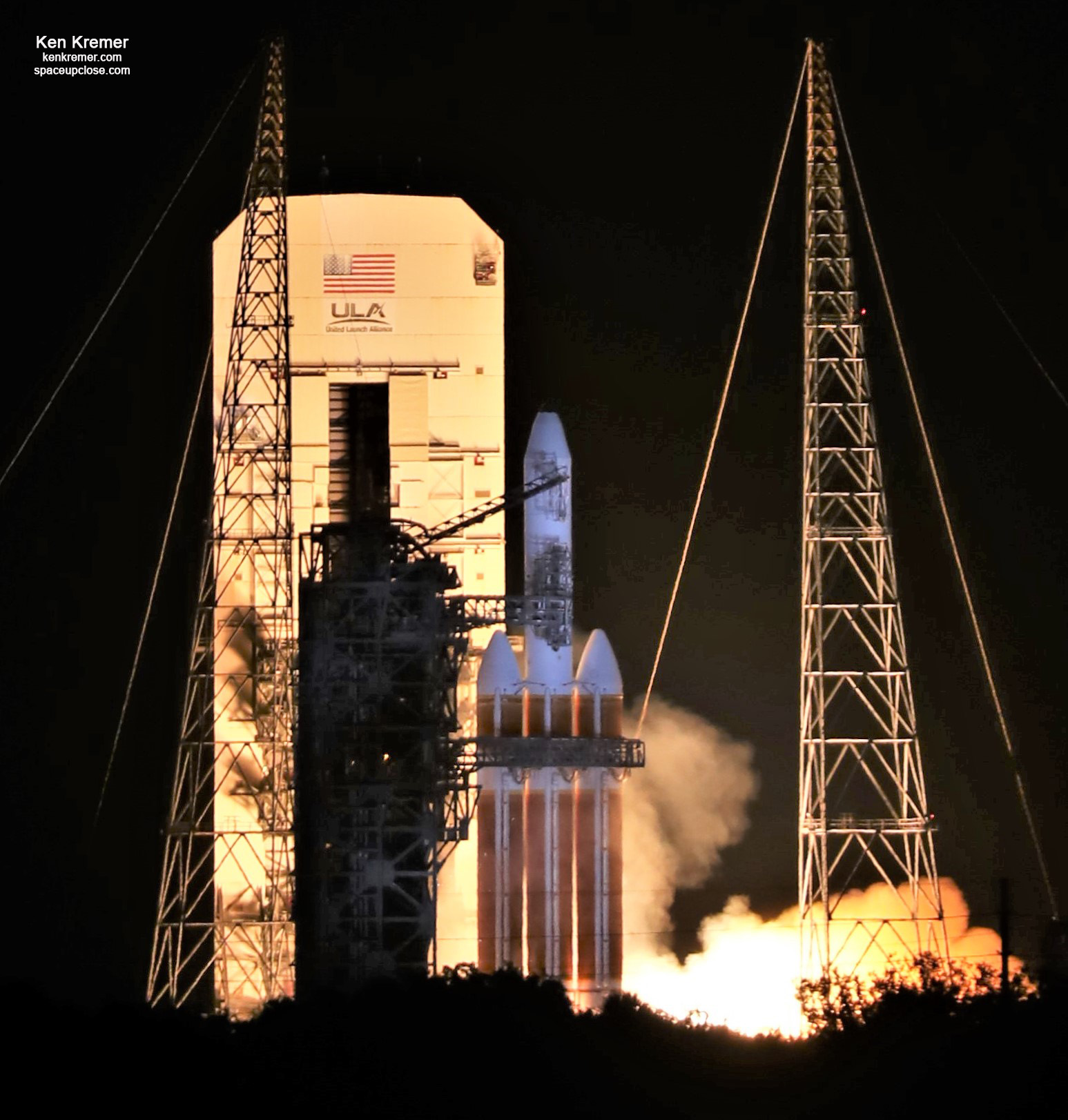
For SpaceUpClose.com & RocketSTEM
CAPE CANAVERAL AIR FORCE STATION, FL – A dramatic dead of night engine hot fire pad abort seconds before liftoff scrubbed the launch of a United Launch Alliance (ULA) triple core Delta IV Heavy rocket Saturday morning, Aug. 29 that was to deliver a top secret NRO spysat to orbit for the US government – and lead off an unprecedented historic triple header of Florida Space Coast launches this weekend including two SpaceX Falcon 9s.
The mission will be delayed at least a week as ULA engineers troubleshoot what went wrong in the final moments.
Weather was perfect for this third try but it was not to be.
With the trio of first stage engines firing already for several seconds with orange flames and exhaust spewing from the triple core Delta IV Heavy an automatic abort was suddenly and unexpectedly called just 3 seconds before blastoff by the terminal countdown ignition sequencer at 3:28 a.m. ET Saturday.
“A Terminal Countdown Sequencer Rack, which controls the countdown, called an abort at T-minus 3 seconds. The launch team is safing the launch vehicle and pad facilities,” ULA tweeted.
A Terminal Countdown Sequencer Rack, which controls the countdown, called an abort at T-minus 3 seconds. The launch team is safing the launch vehicle and pad facilities.
— ULA (@ulalaunch) August 29, 2020
In fact the ULA launch commentator had even announced liftoff on the live UKLA webcast – so we all media momentarily expected a launch – but that was quickly reversed.
“Three, two, one and liftoff!” said Dillon Rice, the ULA webcast live launch commentator.
And the rocket did not move as the flames soon sputtered out – but only after a brilliant flash of yellow-orange light.
“Stand by,” Rice added. “We’ve obviously had a hotfire abort.”
“Countdown has stopped. Safing is in progress.”
Countdown has stopped. Safing is in progress.
— ULA (@ulalaunch) August 29, 2020
The abort was initiated before the engines reached full power and with the rocket still held down by hold down restraints on pad 37.
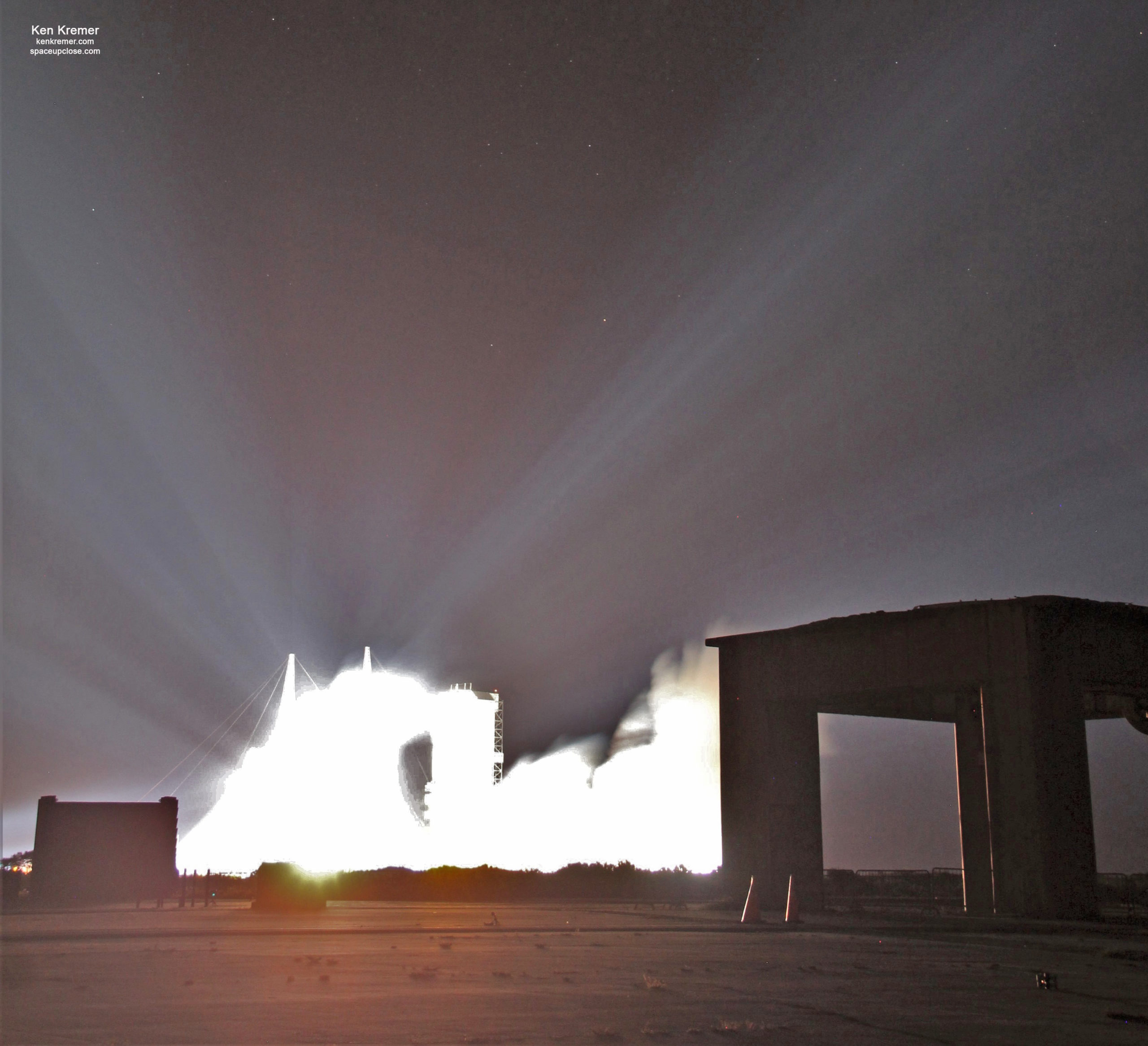
The team then detanked the vehicle of cryogenic propellants.
“ULA Launch Director Lou Mangieri has announced that we will not continue with countdown operations today. The launch team will soon begin draining the cryogenic fuels from the rocket,” ULA tweeted.
ULA Launch Director Lou Mangieri has announced that we will not continue with countdown operations today. The launch team will soon begin draining the cryogenic fuels from the rocket. https://t.co/GKgbdk3wMm
— ULA (@ulalaunch) August 29, 2020
Enjoy our Space UpClose gallery of images from the team of Ken Kremer and Jean Wright.
Check back as the gallery grows.
Liftoff of the 23-story tall triple stick United Launch Alliance (ULA) Delta IV Heavy rocket on the NROL-44 mission for the National Reconnaissance Office (NRO) had been re-slated for 2:04 a.m. EDT (0612 GMT) Aug. 29, 2020 from seaside Space Launch Complex-37 at Cape Canaveral Air Force Station, Florida – following another scrub two days ago due to faulty ground launch pneumatic systems.
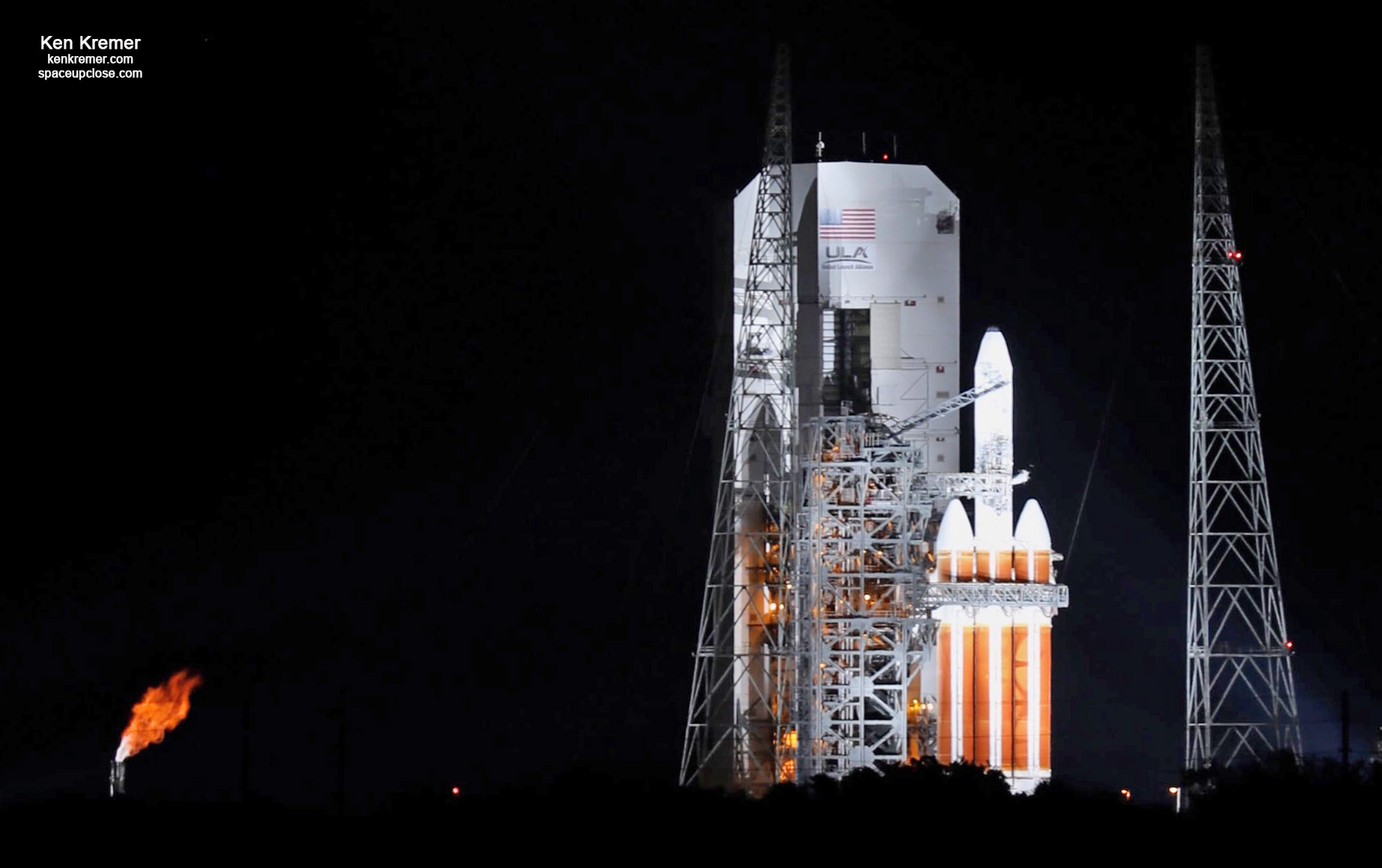
Both the rocket and spacecraft are safe, says ULA CEO Tory Bruno
“The bird is in good shape. This was an automatic abort during the ignition sequence. Cause appears to have been in the ground system. System functioned as intended to protect the vehicle and payload,” ULA CERO Tory Bruno tweeted.
The bird is in good shape. This was an automatic abort during the ignition sequence. Cause appears to have been in the ground system. System functioned as intended to protect the vehicle and payload.
— Tory Bruno (@torybruno) August 29, 2020
Engineers are now thoroughly analyzing all data from the incident and say it will require a stand down of at least 7 days before a new launch attempt.
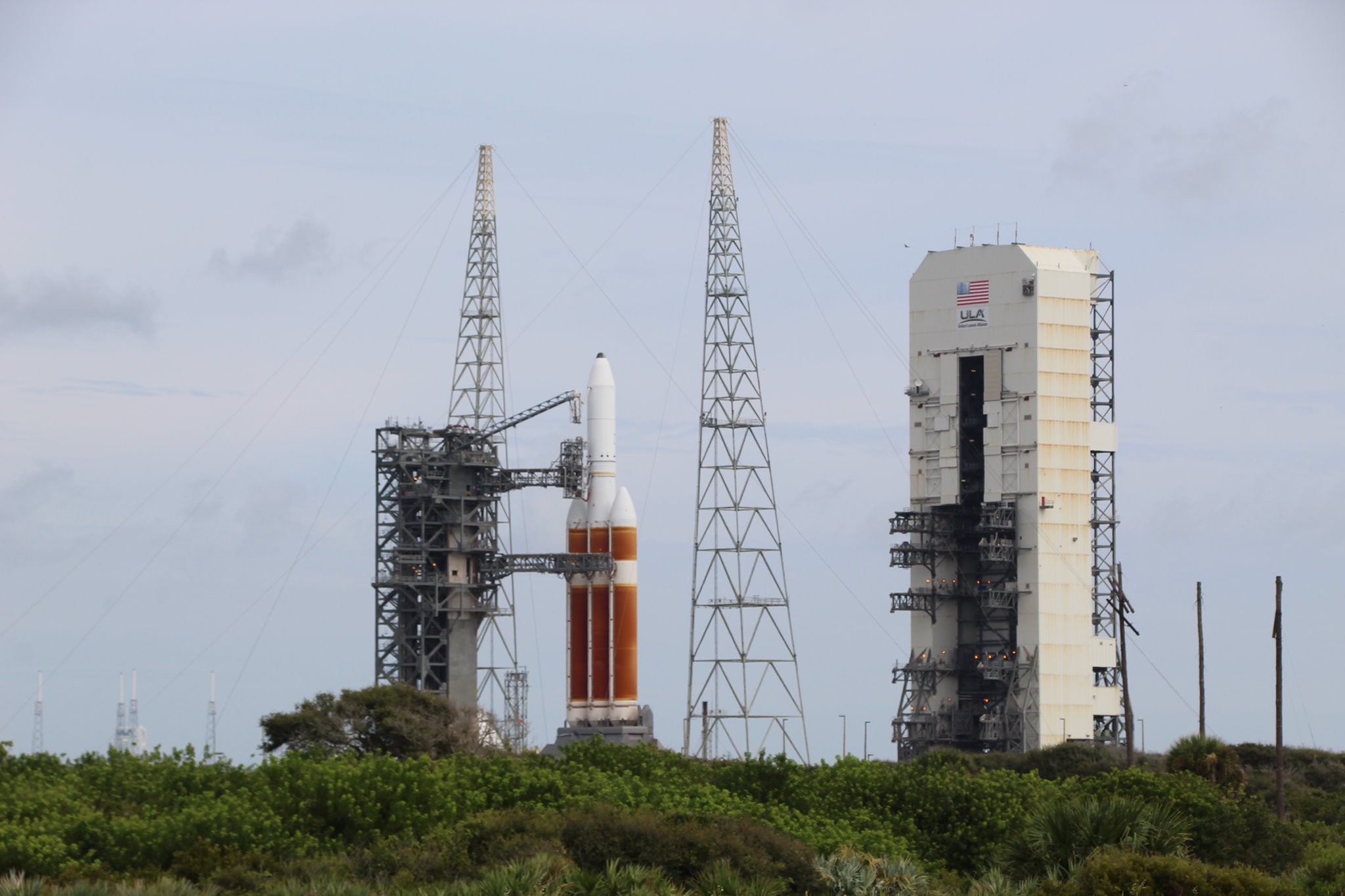
ULA issued this post scrub statement:
The launch of a United Launch Alliance Delta IV Heavy carrying the NROL-44 mission for the National Reconnaissance Office was scrubbed today due to an unexpected condition during terminal count at approximately three seconds before liftoff. The team is currently reviewing all data and will determine the path forward. The required recycle time prior to the next launch attempt is seven days minimum.
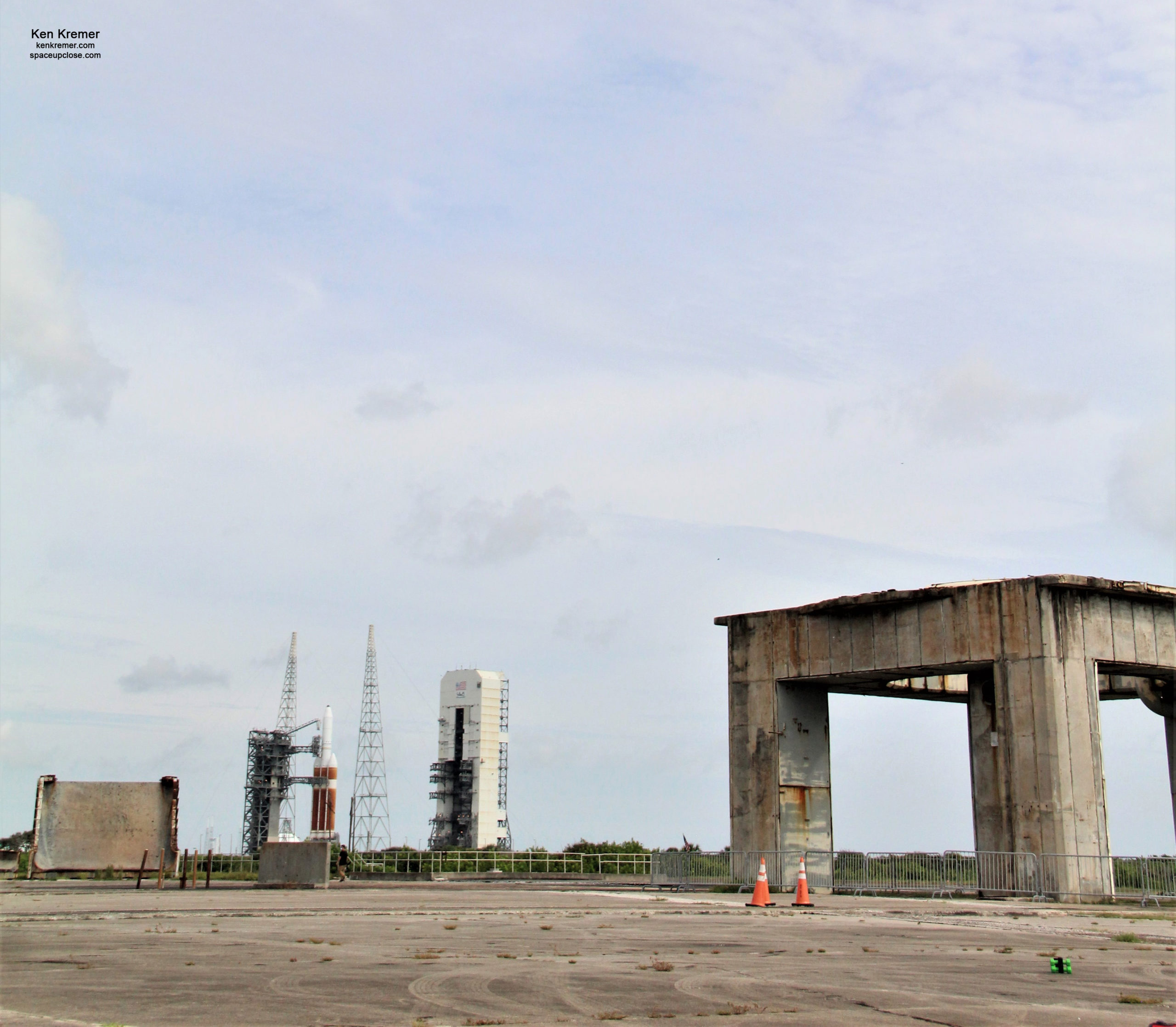
The Delta IV Heavy rocket carrying the NROL-44 classified intelligence gathering satellite for the US government NRO spy agency was due to kick off a trio of Florida Space Coast launches overnight Aug. 29 – thus concluding a busy August with a tremendous finale of blastoffs including a duo of SpaceX Falcon 9’s on Aug. 30 marking three in just two days time; if all had gone well but which was not to be!
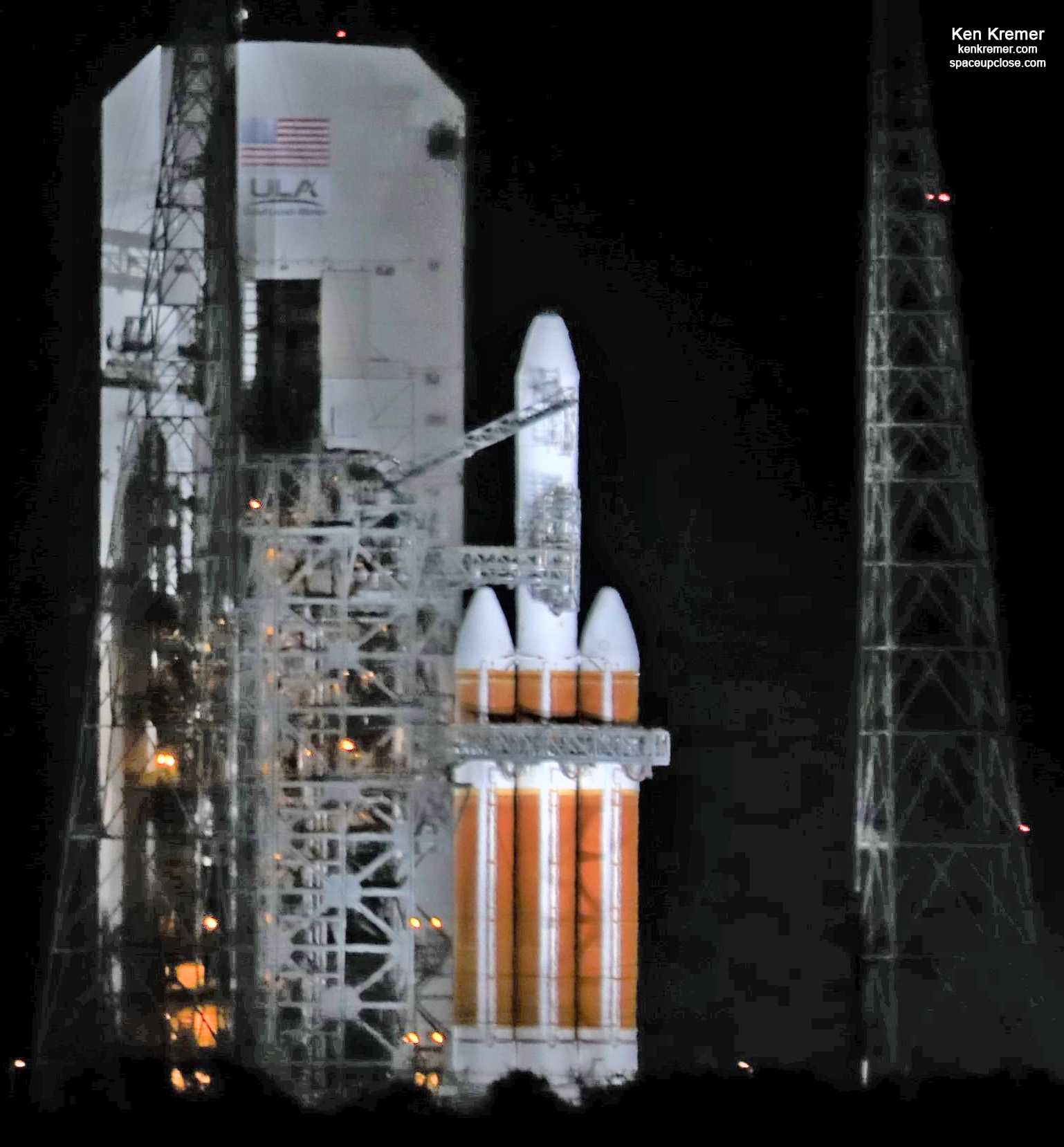
The potentially ‘historic’ launch triple header involving a trio of rocket blastoffs in as little as 3 days have all been delayed like falling dominos by prior scrubs of the triple-core ULA Delta IV Heavy rocket – due to technical issues encountered with ground launch systems at pad 37 two days earlier on Aug. 27 about an hour before the planned middle-of-the-night liftoff under near perfect weather conditions from the Florida Space Coast.
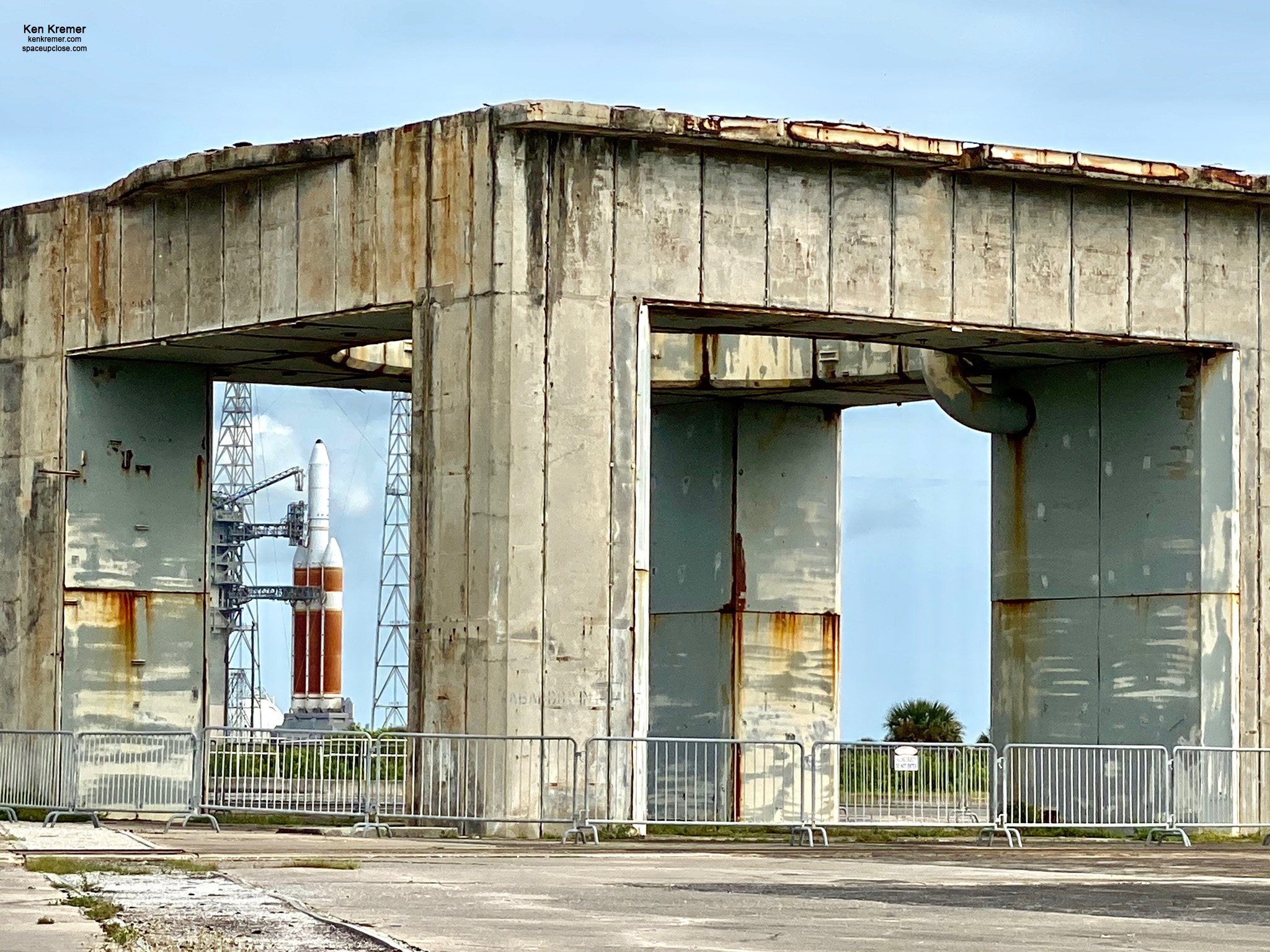
After receiving approval from the US military run Eastern Range after the ULA scrub SpaceX announced it was going ahead with plans to launch two ‘flight-proven’ Falcon 9 rockets back-to-back on Sunday morning and Sunday evening.
SpaceX is slated to launch the Starlink mission first at 10:12 a.m. EDT Sunday morning, Aug. 30 from Launch Complex-39A on NASA’s Kennedy Space Center – followed by the Saocom-1B mission Sunday evening at 7:18 a.m. EDT from Space Launch Complex-40 on Cape Canaveral Space Force Station, FL.
Previously military officials had said a minimum of about 16 hours was required between launches to reconfigure range systems to safely support back to back rocket launches from different launch pads on the Florida Space Coast.
The dynamic duo of blastoffs will count as the 100th and 101st orbital launch attempts by SpaceX since starting with the Falcon 1 booster in 2006.
Watch my Aug. 25 commentary at WKMG CBS 6 TV News Orlando as the retraction work was completed and talking about 3 upcoming launches this weekend.
Video Caption: It’s going to be a busy three days on the Space Coast with three rocket launches scheduled for a history-making line up but to make this triple-header happen, the weather and rocketry must align. James Sparvero/CBS 6
Watch my Aug. 14 guest host and Aug 3 interview appearances at ‘Stay Curious’ show at the American Space Museum about successful Mars Perseverance launch, successful splashdown SpaceX Crew Dragon on Demo-2 1st commercial mission as well as upcoming Crew-1, Artemis Moon mission, SpaceX Starlink and more:
https://www.facebook.com/SpaceWalkOfFame/videos/2690117104638099/
https://www.facebook.com/SpaceWalkOfFame/videos/594560917928307/
Watch Ken’s continuing reports about Commercial Crew and Artemis and onsite for live reporting of upcoming and recent SpaceX and ULA launches including Demo-2, Starlink, X-37B, Solar Orbiter, Mars 2020 and more at the Kennedy Space Center and Cape Canaveral Space Force Station.
Stay tuned here for Ken’s continuing Earth and Planetary science and human spaceflight news: www.kenkremer.com –www.spaceupclose.com – twitter @ken_kremer – email: ken at kenkremer.com
Dr. Kremer is a research scientist and journalist based in the KSC area, active in outreach and interviewed regularly on TV and radio about space topics.
………….
Ken’s photos are for sale and he is available for lectures and outreach events
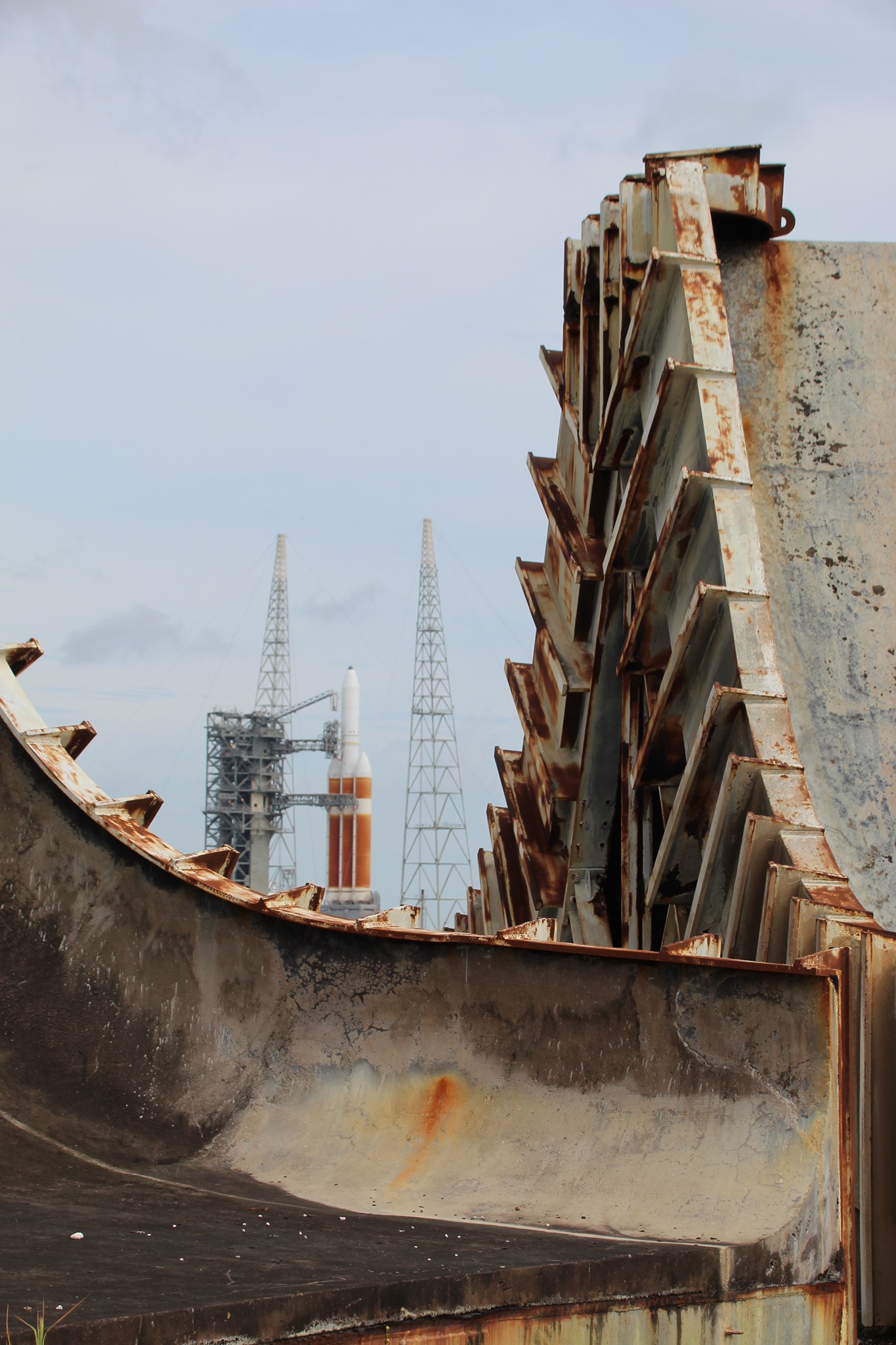
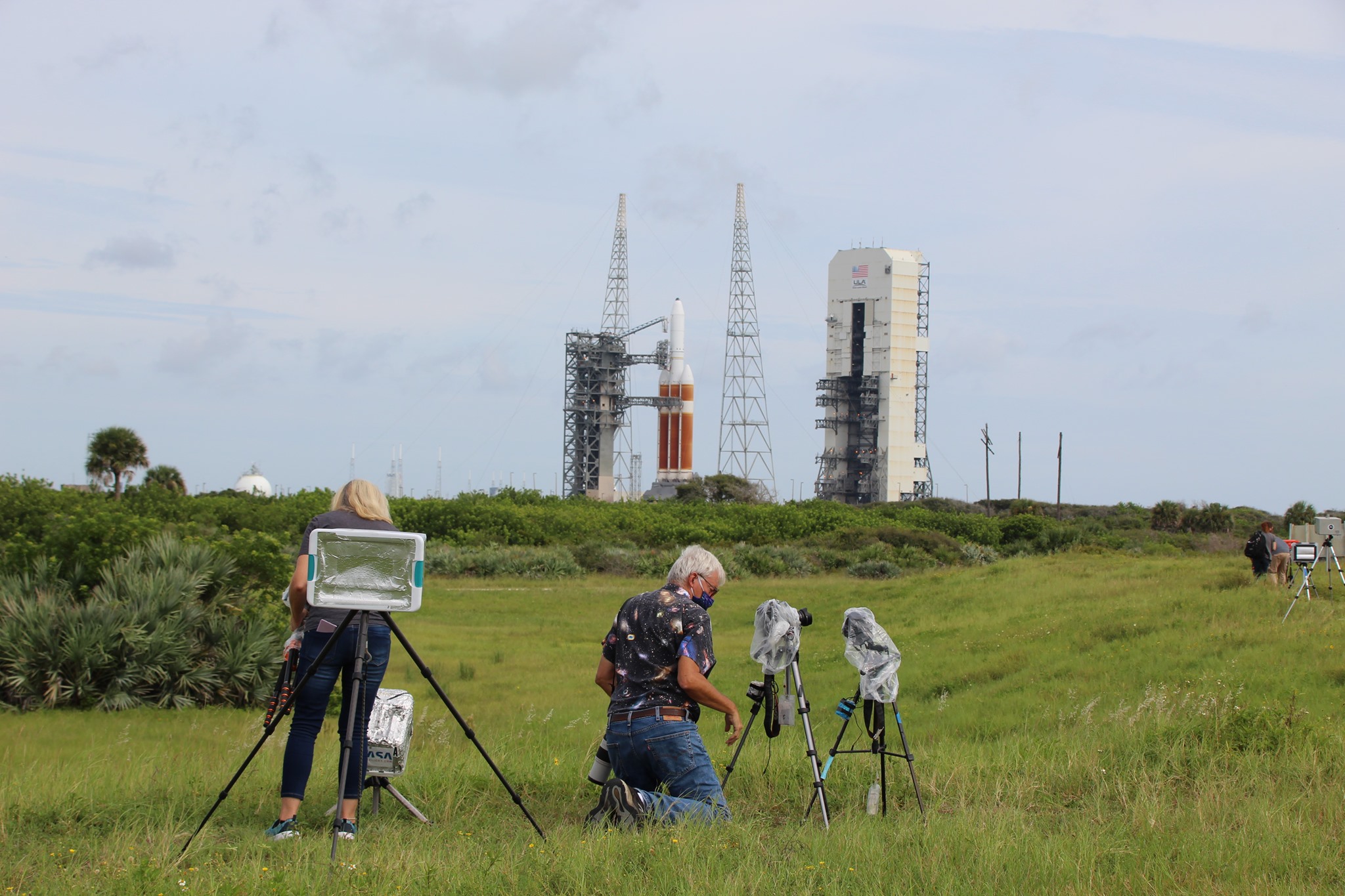
x



